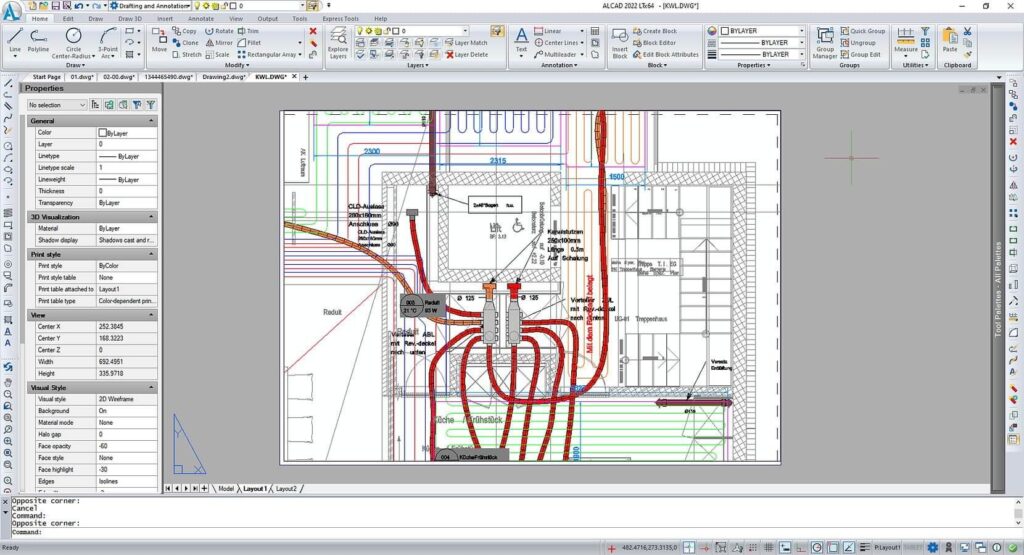Free AutoCAD Alternatives: Redefining Accessibility In Design

The availability of free AutoCAD alternatives marks a pivotal moment for designers worldwide, democratizing access to powerful CAD tools. These alternatives provide a viable option for individuals and organizations seeking to minimize costs without compromising on functionality. For instance, software like FreeCAD, LibreCAD, and DraftSight offer comprehensive 2D and 3D modeling capabilities, supporting a wide array of industries from architecture to mechanical engineering. By eliminating financial barriers, these tools empower aspiring designers, students, and small businesses to explore their creativity and bring their ideas to life without the constraints of expensive software licenses.
Free AutoCAD Alternatives: Empowering DIY Designers
DIY enthusiasts and hobbyists have also benefited significantly from free AutoCAD alternative, leveraging these tools to prototype ideas and execute projects with precision. Whether designing furniture, renovating homes, or crafting intricate models, accessible CAD software enables amateurs to engage in sophisticated design processes typically reserved for professionals. Programs such as Tinkercad and Fusion 360 facilitate intuitive modeling and simulation, empowering users to iterate designs rapidly and refine prototypes before final production. This empowerment fuels creativity and innovation within the DIY community, fostering a culture of hands-on learning and experimentation.

Free AutoCAD Alternatives: Tools For Innovation And Collaboration
The evolution of free AutoCAD alternatives has catalyzed innovation across industries by fostering collaborative design environments. Cloud-based platforms like Onshape and BRL-CAD enable real-time collaboration and version control, facilitating seamless teamwork among geographically dispersed teams. This collaborative capability enhances productivity and accelerates project timelines, as stakeholders can simultaneously access and modify designs from anywhere in the world. Furthermore, open-source CAD software such as OpenSCAD encourages community-driven development, where users contribute to the enhancement and customization of tools to meet specific industry needs. This collective innovation drives continuous improvement and adaptation within the CAD ecosystem.
Free AutoCAD Alternatives: A New Era In CAD Software
The emergence of free AutoCAD alternatives signifies a paradigm shift in CAD software, challenging traditional business models and fostering competition in the market. Open-source initiatives like Blender and KiCAD exemplify this shift by offering powerful tools for 3D modeling, rendering, and electronic design automation (EDA) at no cost. These alternatives not only broaden access to advanced CAD functionalities but also promote transparency and flexibility in software development. Moreover, the community-driven nature of open-source projects encourages knowledge sharing and skill development, cultivating a diverse talent pool of CAD professionals equipped to tackle complex design challenges in various industries.
Free AutoCAD Alternatives: Powerful Tools At Zero Cost
One of the most compelling aspects of free AutoCAD alternatives is their ability to deliver robust features and functionalities without the financial overhead. Programs such as QCAD and SolveSpace provide intuitive interfaces and comprehensive toolsets for creating detailed technical drawings and parametric models, making them ideal for both beginners and experienced CAD users. This accessibility democratizes design capabilities, allowing individuals and organizations to allocate resources towards innovation and project execution rather than software licensing fees. As a result, users can explore new design possibilities and streamline workflows without compromising on quality or performance.
Free AutoCAD Alternatives: The Future Of Design Software
Looking ahead, the trajectory of free AutoCAD alternatives suggests a future where accessibility and innovation continue to drive the evolution of CAD software. Advances in artificial intelligence (AI) and machine learning are poised to enhance design automation and optimization capabilities, further democratizing complex design processes. Additionally, the integration of virtual reality (VR) and augmented reality (AR) technologies promises to revolutionize how designers conceptualize and interact with their creations in immersive environments. These technological advancements, coupled with the accessibility of free CAD tools, will redefine the boundaries of creativity and collaboration across diverse industries.
Discover Free AutoCAD Alternatives For 3D Modeling And Design
Exploring the landscape of free AutoCAD alternatives unveils a plethora of options tailored to specific design needs and preferences. For architects and urban planners, tools like ArchiCAD and Sweet Home 3D offer specialized features for architectural visualization and interior design planning. Meanwhile, designers in the mechanical and aerospace sectors can leverage programs such as FreeCAD and DesignSpark Mechanical for precise parametric modeling and simulation. Each alternative brings unique strengths to the table, whether through advanced rendering capabilities, parametric modeling tools, or compatibility with industry-standard file formats, empowering users to choose the solution that best aligns with their project requirements.
Free AutoCAD Alternatives: Breaking Barriers In CAD Technology
The democratization of CAD technology through free AutoCAD alternatives is not merely about accessibility but also about inclusivity and innovation. By breaking down financial barriers, these tools enable a diverse community of designers, engineers, and hobbyists to participate in the evolution of design software. Moreover, the collaborative and open-source nature of many alternatives fosters a culture of knowledge sharing and continuous improvement, driving advancements in CAD capabilities across global industries. As the demand for intuitive, cost-effective CAD solutions grows, so too does the potential for these alternatives to reshape the future of design, making sophisticated tools accessible to all.
Conclusion
The rise of free AutoCAD alternatives marks a transformative shift in the CAD landscape, offering powerful design tools at zero cost and redefining accessibility in the industry. From empowering DIY enthusiasts and small businesses to fostering collaboration and innovation across global teams, these alternatives democratize CAD software and expand its potential applications. As technological advancements continue to drive the evolution of design software, the accessibility and versatility of free AutoCAD alternatives will play a pivotal role in shaping the future of CAD, enabling a new generation of designers to realize their creative visions and drive innovation forward.








